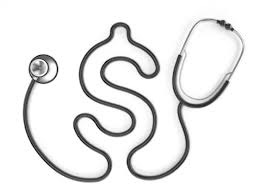Medical device manufacturers have long marketed their products with limited concern for costs. But today, an aging population and skyrocketing medical costs are prompting private insurers and government payers worldwide to limit reimbursements for medical devices.
Medical device manufacturers are responding in two ways, by:
Justifying product price points by carefully documenting their value in improving patient outcomes
Reducing costs throughout their operations by rethinking how they sell and market their products, outsourcing operations, and implementing lean manufacturing principles
This will detail how enterprise software enables medical device manufacturers to more successfully implement this price justification and cost cutting initiatives.
For the upcoming weeks Cre8tive Technology (www.ctnd.com) will be posting a four-part series on Spotlight on Medical Device Manufacturing: 6 Ways to Justify Prices and Rein in Costs with Enterprise Software
June 5 Why Medical Device Manufacturing is Becoming Cost Conscious
June 12 Responding to Pricing Pressures and Increased Costs
June 19 The Role of Enterprise Software in Price Justification and Cost Cutting
June 26 Conclusion
From an Epicor White Paper
Why Medical Device Manufacturing is Becoming Cost Conscious
A decade ago, many medical device manufacturers paid limited attention to costs when they developed products. After all, when making a drug delivery advice, for example, drug costs could exceed device costs by as much as 1000 to 1, leading many providers to pay more attention to optimizing delivery than device cost.
Today, payer pushback against rising costs, healthcare reform, and increasing competition all limit what manufacturers can charge for medical devices, even as R&D costs continue to skyrocket. In their efforts to maintain their bottom line, medical device manufacturers must justify prices while reducing costs throughout their operations. Indeed, a recent survey by the American Society for Quality found that “cost reduction while maintaining quality” is one of the top concerns for medical device manufacturers in 2010.
Payer pushback most
As the population ages and healthcare costs soar, insurers and government programs are limiting reimbursements for medical devices and debating the value of paying higher prices for new devices. As Altico Advisors reports, “Because of rapidly increasing healthcare costs, private insurers and government programs like Medicare have moved to limit payments for many medical treatments that require medical
supplies or devices.” As part of these cost control efforts, the report continues, “third party payers such as Medicare, Medicaid, MCOs and commercial insurers are becoming more involved in determining the types of diagnostics and treatments eligible for cost reimbursement to doctors, hospitals and other providers. In many cases, third-party payers play a flat fee, which encourages the provider to use the lowest cost treatment.”
As a result, when Deloitte Consulting surveyed medical device manufacturers on what they saw as their biggest risk through 2015, thirty-six percent of the respondents identified pricing and sales as their key concerns.
Healthcare reform
The Patient Protection and Affordable Care Act that President Obama signed into law on March 23, 2010 may increase these price pressures. The new law includes a 2.3 percent excise tax on all sales of medical devices, scheduled to take effect in 2013, as one way of paying the cost of insuring 32 million more Americans. The impact is uncertain. Some medical device manufacturers may benefit from increased sales. Larger companies may be able to pass along the costs of the tax. However, smaller manufacturers fear that they may not be able to raise prices sufficiently to cover the tax and may become less profitable.
Increasing competition
As medical device manufacturers continue to face pricing pressures, successful companies will be those that develop innovative products, distinguish them from their competitor’s offerings, and maintain a competitive advantage through a strategic IP portfolio, reports a recent article in Medical Design. An increase in innovation generally leads to an increase in competition which puts further pressure on prices.
High R&D costs
At the same time, the cost of innovation is high. This is a particular challenge for devices that address rare diseases. According to Stephen Ubl, President and CEO of the Advanced Medical Technology Association, “Medical technology companies face potentially enormous (research and development) costs in developing new devices with little hope of recouping their investment due to the small market for some products.”
From an Epicor White Paper
About Epicor
Epicor Software Corporation is a global leader delivering business software solutions to the manufacturing, distribution, retail, and service industries. With more than 40 years of experience, Epicor has more than 20,000 customers in over 150 countries. Epicor solutions enable companies to drive increased efficiency and improve profitability. With a history of innovation, industry expertise, and passion for excellence, Epicor inspires customers to build lasting competitive advantage. Epicor provides the single point of accountability that local, regional, and global businesses demand. For more information, visit www.epicor.com.

